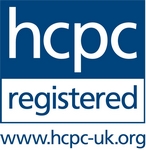Knee Pain
Your guide to different knee conditions.
Please 'click' the name of the condition or treatment to reveal more information
Click here for an overview of knee pain and treatment
Knee pain can affect a person at any age. We often associate knee pain in a younger person with growing pains or sporting injury's.
As we age, knee pain can be affected by joint wear and tear and often we are told it is osteoarthritis.
Importance of specific Diagnosis
There are however many mechanical and chemical changes that can affect the knee joint.
Changes in chemistry, such as inflammation are common, but sometimes Gout is over-looked. And not all knee pain is related to osteoarthritis just because we are older.
The right treatment
As with all conditions the correct treatment for your condition will only be administered after determining the correct diagnosis. A description of knee pain is not a diagnosis.
Clinic examination and ultrasound scans, x-rays and MRI provide the detailed analysis of what is wrong.
Book your appointment with Injection-Clinic to find out why you have knee pain.
Knee Osteoarthritis
press for more information
The knee joint is a weight bearing hinge joint. It therefore is exposed to significant mechanical compression during our life. A 12 stone person, for example, dropping down a single step will have a resultant force of about 36 stone. And this is carried on the one leg.Consequently knee joints are prone to ageing and degenerative changes.
When the joint surface begins to narrow and the irregularities develop, then the movement of the joint is compromised. Pain is often our first indication that something is wrong.
A further aspect is that of inflammation and joint lubrication. Changes to the chemistry of the joint can add additional problems and increase the pain experience.
Knee Osteoarthritis Treatment
press for more information
Treatment for osteoarthritis of the knee requires a focus on two key issues. Improve the joint mechanics and the improve the joint chemistry.
Improve the mechanical function
Alignment, strength and joint range of movement all need addressing. And it has to be acknowledged, there are circumstances when best mechanics does involve having a joint replacement.
For most of us however, our best outcome involves work to improve strength and leg alignment. Changes in footwear and home/ work alterations to minimise joint strain also benefit.
Guided injections to help correct the chemistry.
Guided injections into the joint capsule, bursa or around tendons and ligaments help to improve the chemistry within the knee joint.
Corticosteroids are effective at reducing inflammation.
Visco-supplements improve joint lubrication.
Platelet Rich Plasma can help improve the healing rate of ligaments and tendons.
Arthrosamid aims to reduce inflammation and provide long term pain relief
Please read the article on Treatment for Knee Osteoarthritis for more information.
Patella Femoral Joint Pain
The Patella Femoral joint (knee cap) is problem that affects persons of all ages. During puberty, growth spurts can result in mal-tracking of the patella. As the thigh bones lengthen the muscles and soft tissues have a problem in keeping up!
Later in life the extreme mechanical compression force that is generated through the knee cap can lead to wear and tear changes. When the joint starts to 'rub' we often get pain.
In many circumstances the pain experience is felt at the back of knee or an aching down the leg. Remember the location of pain is not diagnostic. Clinic examination, x-rays and ultrasound scan are.
Patella Femoral Joint Treatment
Treatment for Patella Femoral Joint pain needs to have focus on correcting the movement of the patella (knee cap) as it glides within the knuckles of the knee joint ( femoral condyles).
Mechanical issues.
Mechanical wear and tear can often be present, but alignment still needs to be addressed. The strength of the vastus medialis muscle is key to controlling movement of the knee cap.
Other issues include correcting the hip joint and foot position. There are times when orthotics can help improve joint mechanics.
Improving the joint chemistry
Injections to assist with joint lubrication or suppress inflammation are further beneficial.
Ostenil can be administered to improve lubrication.
Corticosteroids can decrease excessive inflammation and reduce pain; making it easier to perform the corrective exercises.
Ligament Strain
Knee pain can be caused by strain or even tears to one of the numerous ligaments that help stabilise the knee joint.
Different Ligaments
The key ligaments in the knee joint include the Anterior Cruciate (ACL), Medial Collateral (MCL) and Lateral Collateral Ligaments (LCL).
A forced side-ways or twisting movement can strain these ligaments and generate a strong a pain response.
Rupture to the ACL permits excessive forward movement of the shin bone and is often associated with immediate swelling in the joint. A person with this injury will not continue playing their sport.
Tears to the MCL mean that the side-ways movement of the joint is lax. Swelling can occur but is not typically excessive. Football is a key sport in risking MCL strains because of the foot to foot impact as a player challenges for the ball.
As with all knee pain, diagnosis is critical to identifying which ligament is injured so the correct treatment is administered.
Knee Ligament Treatment
Treatment for knee ligament strains requires support and rest. Gentle range of movement exercises are needed to prevent tissue adhesion's.
In more significant strains and tears, the process takes several months settle and the person must be patient.
There are times when healing is delayed and in this situation PRP injections can be considered.
With partial tears, a knee brace may be required to ensure no addition strain is placed on the ligament.
Complete tears often require a surgical opinion. Injection Clinic can help make this diagnosis and recommend appropriate onward care.
Meniscal Damage
The term meniscus and cartilage are often interchanged. Both refer to the tissue that helps smooth and support a joint surface. Not all joints have menisci, but all have smooth cartilage.
The menisci in the knee joint are large fibrous cartilage structures that increase the contact area between the thigh bone (femor) and shin bone (tibia).
Damage to the meniscus
There are often two age groups of people that suffer with meniscal tears. The younger sporting person can tear their meniscus during a forceful twisting action, such as happens in football or netball.
In the older population meniscal damage can arise from much less traumatic events, simply because the meniscus has also degenerated and is therefore thinner and less elastic. As a consequence, getting out of a car can be the final action that generates damage.
Symptoms
At the time of the damage there is often pain and later swelling. There is typically a reduction in the joints range of movement.
Over time this can settle but if movement is not restored and 'locking' and swelling persist then medical intervention may be needed.
Meniscal Damage Treatment
Treatment for damage/ tears to the meniscus depends on extent of damage and personal situation.
Rest, ice, compression, elevation
In the acute phase, after trauma the standard process of rest, ice, compression and elevation is a good place to start.
Gentle movements to maintain joint function are recommended, if the pain prevents normal walking then the use of walking aids is required.
Its not getting better
As stated in the information on meniscal damage, the age and circumstances of the person does affect clinical management. In an older person with joint degeneration a period of conservative management is likely to provide the best outcome. Treatment needs to follow the same guidance as treatment for an OA knee.
With a younger person, if the joint continues to lock and end of range movement is blocked then consideration will be given to surgery.
Removing the damaged part of the meniscus does mean the person instantly losses vital cartilage tissue but hopefully they can regain movement and function.
Any treatment is not a cure
It is important to recognise that treatment is not a cure. Damage to cartilage does not repair to its original status and the removal of damaged tissue means you have less tissue support between the joints.
Compliance to non surgical treatment, such as progressive exercise to regain strength, range of movement and best patterns of movement should always be the first stage.
Only if this fails to provide benefit should surgery then be considered.
Can injections be used?
Yes. After the acute phase and certainly with degenerative tears the use of steroid injections and aspiration can help improve function and allow for exercises to be performed.
Hyaluronic acid injections can also be used to assist with joint lubrication. Over time and without further trauma, the menisci can settle down and in part smooth over any areas of damage.
New Patient Appointments
Examination
and
Ultrasound Scan
£90


